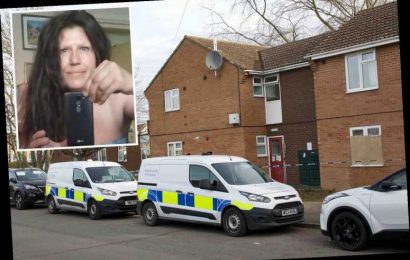The out-of-control crime on NYC subway that spiked 50% in a year before horror subway shooting: Hammer attacks, commuters pushed to their deaths and fatal stabbings
- Subway crime has spiked 46 percent from last last year
- There have been have been nearly 500 major crimes reported underground this year, 224 more than the year before
- January saw the biggest increase, nearly doubling the year before, with 198 crimes reported compared to 113 in the first month last year
- New York Mayor Eric Adams unveiled a plan in February that has seen limited success
- Police reported 16 slashings in the system the week after his plan was announced
Hammer attacks, feces smearing, fatal shovings and now a smoke bomb-mass shooting have become the risk for every tourist and New Yorker who dare to brave the subterranean horrors that await in the city’s subway system.
The attack on Tuesday in the Big Apple’s underground transit system is just the latest in a wave of crime that has plagued the city and hobbled its economic comeback after two years of pandemic restrictions.
Transit crime has spiked 46 percent — with 224 more incidents — since last year as the city opens up.
In March alone the number of crimes in the subway jumped 55 percent, from the same period last year, according to the latest New York City Police Department statistics. There were 180 crimes reported in March of this year compared to 118 crimes for 2021.
January saw the biggest increase, nearly doubling the year before, with 198 crimes reported compared to 113 in the first month last year.
That was the month when Deloitte analyst Michelle Go was pushed to her death under a Times Square train by a homeless man with a history of mental illness.
The suspect Martial Simon, 61, also had a violent criminal history. He served two years prison for robbing taxi drivers at gunpoint.
After the killing, Mayor Eric Adams made safety in the subway system a top priority, holding a press conference in the Times Square station in February and promising that he would beckon riders back and clear out homeless people using the commuter system for shelter.
Days after his announcement, six people were stabbed in the system and a city Health Department scientist Nina Rothschild, 58, was pushed down the stairs in a Queens subway station and beaten 13 times in the head with a hammer.
Career criminal William Blount, 57, was arrested for the attack after he was found with the city worker’s credit cars and NYC ID and charged him with attempted murder, robbery and assault.
Rothschild suffered a skull fracture in the attack, but is expected to recover.
Also in February, a man upset that his sexual advances had been rebuffed on a Bronx subway platform, defecated in a plastic bag then smeared it on the head and face of the woman he had hit on.
Frank Abrokwa, 37, got away from the scene of that disgusting crime, but he was nabbed later for throwing a dumbbell through the window of a storage facility where he kept his belongings.
It also came to light that Abrokwa had punched a spit at an Orthodox man in Crown Heights on March 2 in an unprovoked attack that prosecutors are considering a hate crime.
Another hate crime occurred on a northbound A train on March 19 when an unhinged assailant attacked and beat a gay man, according to cops.
‘The suspect began spitting at a 22 Y/O male [victim] before attacking him & ripping out his hair while making anti-gay remarks,’ according to the NYPD.
Criminal justice reforms, like a limit on the discretion of judges to impose pre-trial incarceration have been blamed and a decriminalization of petty crimes like shoplifting, have been blamed for the crime wave.
District Attorney Alvin Bragg, who took office in January, announced in his ‘day-one memo’ that certain gun crimes would not be prosecuted.
Adam’s ‘holistic’ plan for combatting crime, which unveiled in February with Gov. Kathy Hochul at his side, seems to have a limited affect on the chaos.
He proposed 30 ‘Joint Response Teams’ made up of mental health workers, cops and community organizers to address poverty, homelessness and crime. He, with funding from Hochul, promised to increase shelter and mental health beds available.
Under his plan the Metropolitan Transportation Authority would force all subway occupants off the trains at the end of the line for cleaning.
Source: Read Full Article






